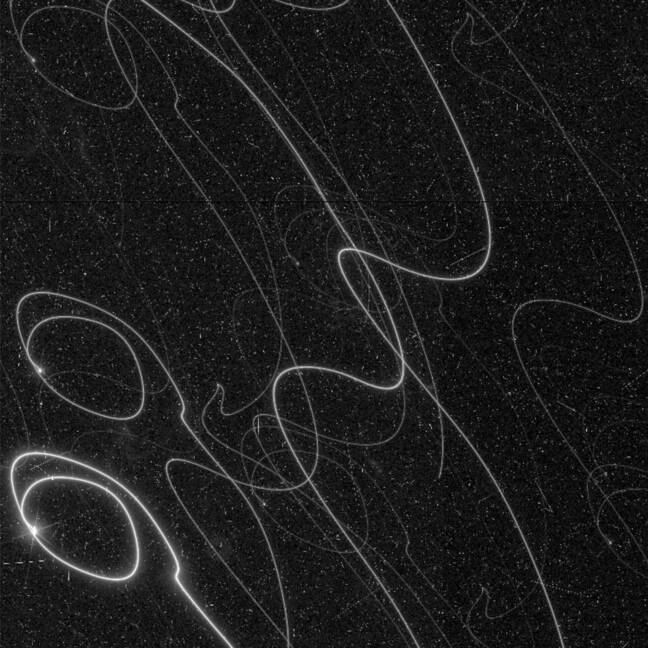Software patch fixes Euclid space telescope navigation bug
Probe goes loopy after mistaking solar rays for stars
The European Space Agency's Euclid space telescope is back to normal and will resume its mission, thanks to a software update that was required after its navigation sensors mistakenly identified solar ray signals as stars.
Launched in July, the billion-euro observatory designed to study dark energy and dark matter, successfully reached its target destination, a region 1.5 million kilometers (1 million miles) away from Earth, to enter a stable orbit following our planet around the Sun.
But shortly after its instruments were deployed and it snapped a first picture a month later, mission control discovered the telescope was failing to focus on stars. Squiggly lines and circles captured in another image revealed that Euclid was looping around and struggling to lock onto distant stars to keep it steady during its observations.

What the scope saw: ESA satellite view goes loopy after solar mistake. Image credit: ESA. Click to enlarge
Mission control pinpointed the issue and realized the telescope's Fine Guidance Sensor (FGS), which the craft uses to locate a set of landmark stars to help navigate and align its instruments on designated targets, was to blame. The optical sensors were mistakenly identifying protons, ejected by the Sun during periods of high solar activity, as stars.
The FGS analyzes light from distant sources and helps control Euclid's orientation. Since it was misinterpreting the solar rays as stars, the telescope was moving haphazardly making it difficult to focus its sight. Working together with aerospace companies Thales Alenia Space and Leonardo, ESA engineers updated its software to change the way its sensors characterize stars.
The patch was uploaded to Euclid, and the telescope is now functioning normally. Mission control will continue testing its performance for a little while longer before it officially begins to collect data.
"The performance verification phase that was interrupted in August has now fully restarted and all the observations are carried out correctly," Giuseppe Racca, Euclid Project Manager, said before the weekend. "This phase will last until late November, but we are confident that the mission performance will prove to be outstanding and the regular scientific survey observations can start thereafter."
- Europe's Euclid telescope launches to figure out dark energy, the universe, and everything
- After fears that Europe's space scope was toast, its first images look mighty fine
- Supernova peekaboo could provide clues to our universe's age
Named after the Greek mathematician, Euclid will snap images of galaxies that formed billions of years ago to help astronomers build a 3D map covering a third of the sky. The map will hopefully show how the universe evolved over time, the distribution of matter, and how it is affected by gravity, in order to probe the effects of dark matter and dark energy.
Cosmologists believe the latter is accelerating the universe's rate of expansion, and that gravity and dark matter counteract the effects of dark energy by drawing galaxies closer to one another.
"We don't know what dark energy is," Mike Seiffert, a project scientist working at NASA's Jet Propulsion Laboratory who worked on the Euclid mission, previously told The Register.
"We know so little about it because its effect on Earth, or the Solar System, or of our own galaxy is extremely small … We are now trying to take the next steps by using powerful telescopes to measure an enormous number of galaxies covering very large distances. Euclid will be the first space mission dedicated to such studies." ®
 Biting the hand that feeds IT
Biting the hand that feeds IT